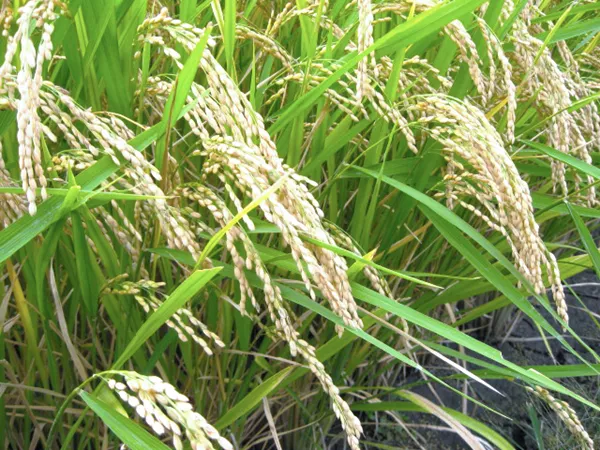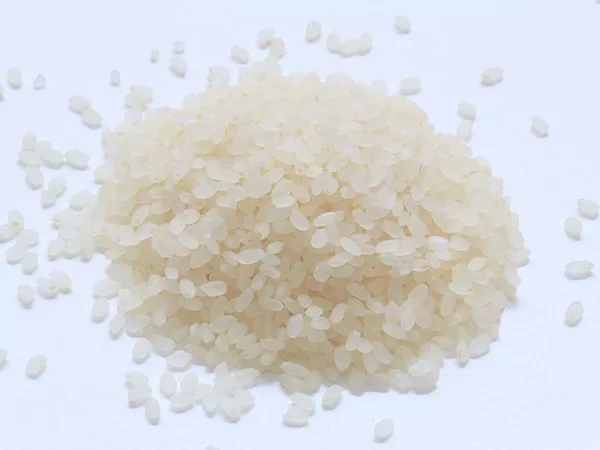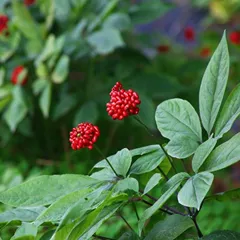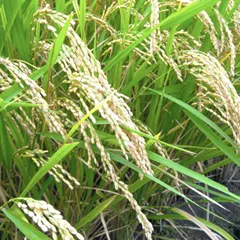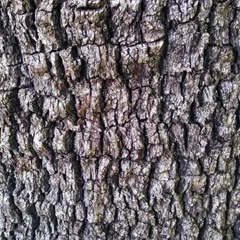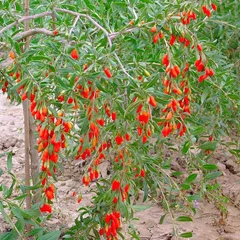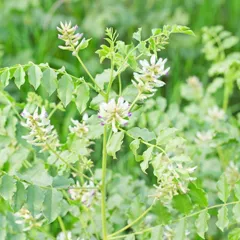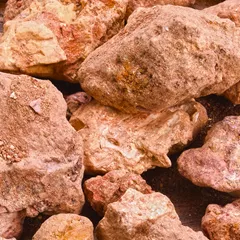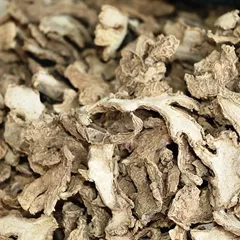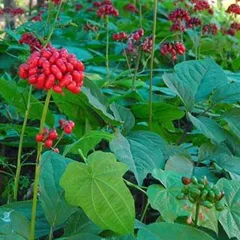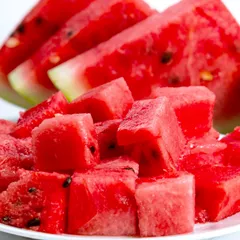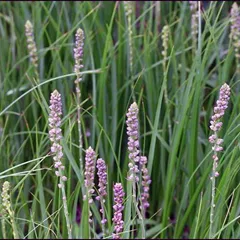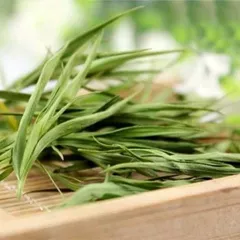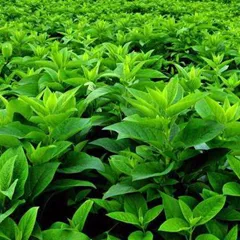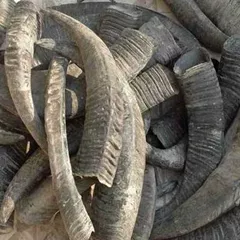Jing Mi
Jing Mi
English: Rice sprouts
Chinese: 粳米
Parts used: Seed kernels
TCM category: Tonic herbs for Qi Deficiency
TCM nature: Neutral
TCM taste(s): Sweet
Organ affinity: Spleen Stomach
Scientific name: Oryza sativa subsp or japonica
Other names: Geng Mi, Nonglutinous japonica rice
Use of Jing Mi (rice sprouts) in TCM
Please note that you should never self-prescribe TCM ingredients. A TCM ingredient is almost never eaten on its own but as part of a formula containing several ingredients that act together. Please consult a professional TCM practitioner, they will be best able to guide you.
Preparation: Extract the kernels from the seeds
Dosage: 9 - 15 grams
Main actions according to TCM*: Replenishes Qi and tonifies the Spleen and Stomach. Eliminates thirst. Stops diarrhea.
Primary conditions or symptoms for which Jing Mi may be prescribed by TCM doctors*: Polydipsia Cholera Diarrhea Vomiting Irritability Dysentery
Common TCM formulas in which Jing Mi is used*
Mai Men Dong Tang
Source date: 220 AD
Number of ingredients: 6 herbs
Formula key actions: Nourishes the Stomach. Generates Body Fluids. Directs Rebellious Qi downward.
Conditions targeted*: Lung atrophyLaryngitis and others
Jing Mi is an assistant ingredient in Mai Men Dong Tang. This means that it either serves to reinforces the effect of other ingredients or it moderates their toxicity.
In Mai Men Dong Tang, Jing Mi work closely with the king and deputy herbs to tonify the Stomach Qi and generate Body Fluids.
Xie Bai San
Source date: 1119 AD
Number of ingredients: 4 herbs
Formula key actions: Drains Heat from the Lungs . Calms wheezing.
Conditions targeted*: Early stage measlesPneumonia and others
Jing Mi is an assistant ingredient in Xie Bai San. This means that it either serves to reinforces the effect of other ingredients or it moderates their toxicity.
In Xie Bai San, Jing Mi protects the Stomach from the cold properties of the other herbs.
Tao Hua Tang
Source date: 220 AD
Number of ingredients: 3 herbs
Formula key actions: Warms the Middle. Dispels Cold. Binds up the bowels and stops dysenteric disorders.
Conditions targeted*: Ulcerative colitisCrohn's disease and others
Jing Mi is an assistant ingredient in Tao Hua Tang. This means that it either serves to reinforces the effect of other ingredients or it moderates their toxicity.
In Tao Hua Tang, Jing Mi nourishes the Stomach and harmonizes the Middle Burner.
It helps the other ingredients improve the function of the Stomach and Intestines.
Qing Shu Yi Qi Tang
Source date: 1852 AD
Number of ingredients: 10 herbs
Formula key actions: Clears summerheat. Augments the Qi. Nourishes the Yin. Generates Body Fluids.
Conditions targeted*: HyperthermiaHeat stroke and others
Jing Mi is an assistant ingredient in Qing Shu Yi Qi Tang. This means that it either serves to reinforces the effect of other ingredients or it moderates their toxicity.
In Qing Shu Yi Qi Tang, Jing Mi augment the Qi and nourish the Stomach.
Not only it assists in treating the underlying condition, they also prevent the cloying nature of the Yin-nourishing herbs and the cold nature of the Heat-clearing herbs from upsetting the Stomach.
Bai Hu Tang
Source date: 220 AD
Number of ingredients: 4 herbs
Formula key actions: Clears Qi-level Heat. Drains Stomach Fire. Generates fluids. Alleviates thirst.
Conditions targeted*: MeningitisScarlet fever and others
Jing Mi is an envoy ingredient in Bai Hu Tang. This means that it directs the formula towards certain area of the body and/or harmonizes the actions of other ingredients.
In Bai Hu Tang, Jing Mi benefits the Stomach and protect the Fluids. It also helps prevent the extremely Cold properties of the other ingredients from injuring the Middle Burner.
Zhu Ye Shi Gao Tang
Source date: 220 AD
Number of ingredients: 7 herbs
Formula key actions: Clears Heat. Generates Body Fluids. Strengthens and regulates Qi.
Conditions targeted*: PneumoniaEncephalitis B and others
Jing Mi is an envoy ingredient in Zhu Ye Shi Gao Tang. This means that it directs the formula towards certain area of the body and/or harmonizes the actions of other ingredients.
In Zhu Ye Shi Gao Tang, Jing Mi , together with Liquorice, serves two Functions. They assist Ginseng in tonifying the Qi, and they harmonize the Middle Burner and nourish the Stomach, thereby protecting the Stomach against injury from Gypsum.
Hua Ban Tang
Source date: 1798 AD
Number of ingredients: 6 herbs
Formula key actions: Clears Qi-level Heat. Cools the Blood.
Conditions targeted*: Macular rash and others
Jing Mi is an envoy ingredient in Hua Ban Tang. This means that it directs the formula towards certain area of the body and/or harmonizes the actions of other ingredients.
In Hua Ban Tang, Jing Mi supplies the Middle Burner Qi and harmonizes the actions of the other ingredients.
Key TCM concepts behind Jing Mi's properties
In Traditional Chinese Medicine (TCM), Jing Mi belongs to the 'Tonic herbs for Qi Deficiency' category. Tonic herbs are used for patterns of Deficiency, when one lacks one of the 'Four Treasures' (Qi, Blood, Yin and Yang). Qi tonics are typically sweet and they tend to enter the Spleen and Lungs because these Organs are most involved with the production of Qi.
Furthermore Jing Mi is Neutral in nature. This means that Jing Mi typically doesn't affect the balance in your body. Balance between Yin and Yang is a key health concept in TCM. Eating too many "Hot" (Yang) ingredients can lead to an imbalance whereby one has a Yang Excess. The inverse is true as well: too many "Cold" (Yin) ingredients can lead to a Yin Excess. The Neutral nature of Jing Mi means that you don't have to worry about that!
Jing Mi also tastes Sweet. The so-called 'Five Phases' theory in Chinese Medicine states that the taste of TCM ingredients is a key determinant of their action in the body. Sweet ingredients like Jing Mi tends to slow down acute reactions and detoxify the body. They also have a tonic effect because they replenish Qi and Blood.
The tastes of ingredients in TCM also determine what Organs and Meridians they target. As such Jing Mi is thought to target the Spleen and the Stomach. In TCM the Spleen assists with digestion, Blood coagulation and Fluids metabolism in the body. The Stomach on the other hand is responsible for receiving and ripening ingested food and fluids. It is also tasked with descending the digested elements downwards to the Small Intestine.
Use of Jing Mi as food
Jing Mi is also eaten as food.

